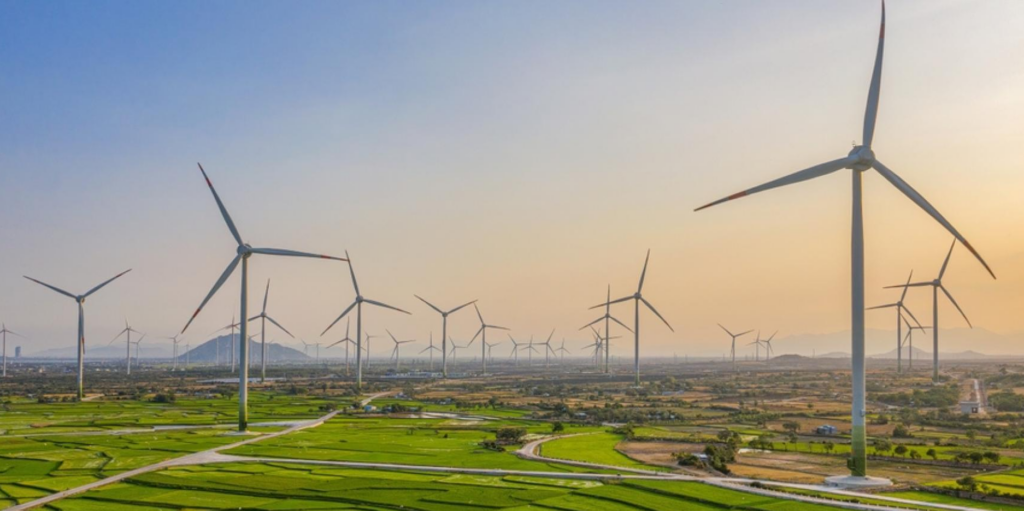Magnetometer well surveys ensure developers are aware of abandoned and orphaned wells and can tackle potential hazards before they interfere with operations.
From solar to wind to battery projects, U.S. Well Location Supports Renewable Projects in Oil & Gas Country is taking off. By the end of 2023, the U.S. Energy Information Administration predicted utility-scale solar installations would double the 2022 capacity with 24 GW, and wind capacity would rise to 8 GW.
Former fossil-fuel producers in many states have joined renewable developers to generate solar and wind power. That makes oil and gas fields the site of projects from New York to Iowa to California. In fact, Texas leads the country in Well Location Supports Renewable Projects in Oil & Gas Country production.
But building renewable projects on top of existing wells can create significant issues for developers and permitting managers. Although you’re unlikely to drive a construction piling down a well, you could face unforeseen environmental hazards—and be forced to rip out a solar array or part of a wind farm after installation to make repairs with a rig or heavy equipment.
Here’s a closer look at abandoned and orphaned wells and the environmental hazards they pose. Even finding these wells in massive oil and gas fields is a challenge, given the inadequacy of state well databases. But new technology offers a viable and cost-effective way to conduct essential due diligence and manage hazards that could derail your renewable project.
The Challenge of 3 Million Orphaned Wells
Abandoned wells are those that have reached the end of economic production. If the owner went bankrupt or can’t be located, then it’s an orphaned well. Although operators may cap wells, that’s not enough. Instead, owners must plug wells with cement to keep them from leaking liquids or gases into groundwater, soils, and the atmosphere.
In 2018, the U.S. Environmental Protection Agency (EPA) estimated there are more than 3 million orphaned wells around the country. Of those, 2.15 million—69%—aren’t plugged. With only 130,000 of these wells identified and documented, a staggering amount of work is needed to find, record, and assess the critical risks posed by millions more.
Environmental Hazards from Well Leakage and Emissions
The hazards posed by orphaned and abandoned wells include emissions of greenhouse gases and leakage of toxic chemicals such as benzene, a carcinogen. Degraded casings or cement in old wells can allow seepage into freshwater aquifers. Unplugged wells are more likely to emit gases. And orphaned sites often have old equipment, contaminated soil, or other waste at the surface that spills on the ground or into open water.
Also, methane emissions from unplugged wells contribute significantly to short-term climate change. Although methane doesn’t persist as long as carbon dioxide, it’s 25 times more potent at trapping heat and accounts for a fifth of global warming.
Overall, environmental monitoring data isn’t extensive enough to quantify risks, especially those related to air and water quality and human health.
The Notorious Inadequacy of State Well Databases
A major roadblock is simply knowing if renewable project land contains a well. Inaccurate, outdated, and incomplete databases give only sketchy information on the millions drilled since the first was sunk in 1859. Some recorded wells were proposed but never drilled; some were drilled but never marked on maps. Others were drilled and marked, but their map location is incorrect.
Given environmental, health, safety, and economic concerns around abandoned and orphaned wells, developers increasingly recognize the need to identify and address issues before breaking ground on renewable projects. But you need a better solution than searching for wells in heavy vegetation and rough terrain with obsolete equipment.
A Viable and Scalable Solution for Well Detection
Due to their steel casings, oil and gas wells generate characteristic magnetic signals. A magnetometer can detect this signature, but until recently, they were too heavy to use for aerial surveys with drones.
Then, UAV Exploration (UAVEX) pioneered Unmanned Aerial Vehicle (UAV) Magnetic Surveying for well locating. We combine the latest lightweight magnetic sensor technology, highly specialized aerial platforms, and expert flight operations to produce the highest quality unmanned aeromagnetic surveys available. Regulatory agencies have adopted our methods as the standard for abandoned well surveys—which are now a requirement for project approval in some areas, including most of New York state.
As a green energy developer, managing the environmental risks created by abandoned and orphaned wells should be part of your project due diligence. Aeromagnetic surveys help alleviate risks, streamline project implementation, and contribute to responsible development—so you can confidently build your Well Location Supports Renewable Projects in Oil & Gas Country project even in oil and gas country.
For more information on the state-of-the-art in magnetometer well surveys, click the Contact button above, call us at 724-432-2999, or email us at contact@uavex.com.

